This exploration is for all ages, as the colored smilies show. In this activity your family will create a timeline of the major discoveries of the Age of Exploration. Explanations of the Age of Exploration timeline events are given, but we encourage you to do even more research.



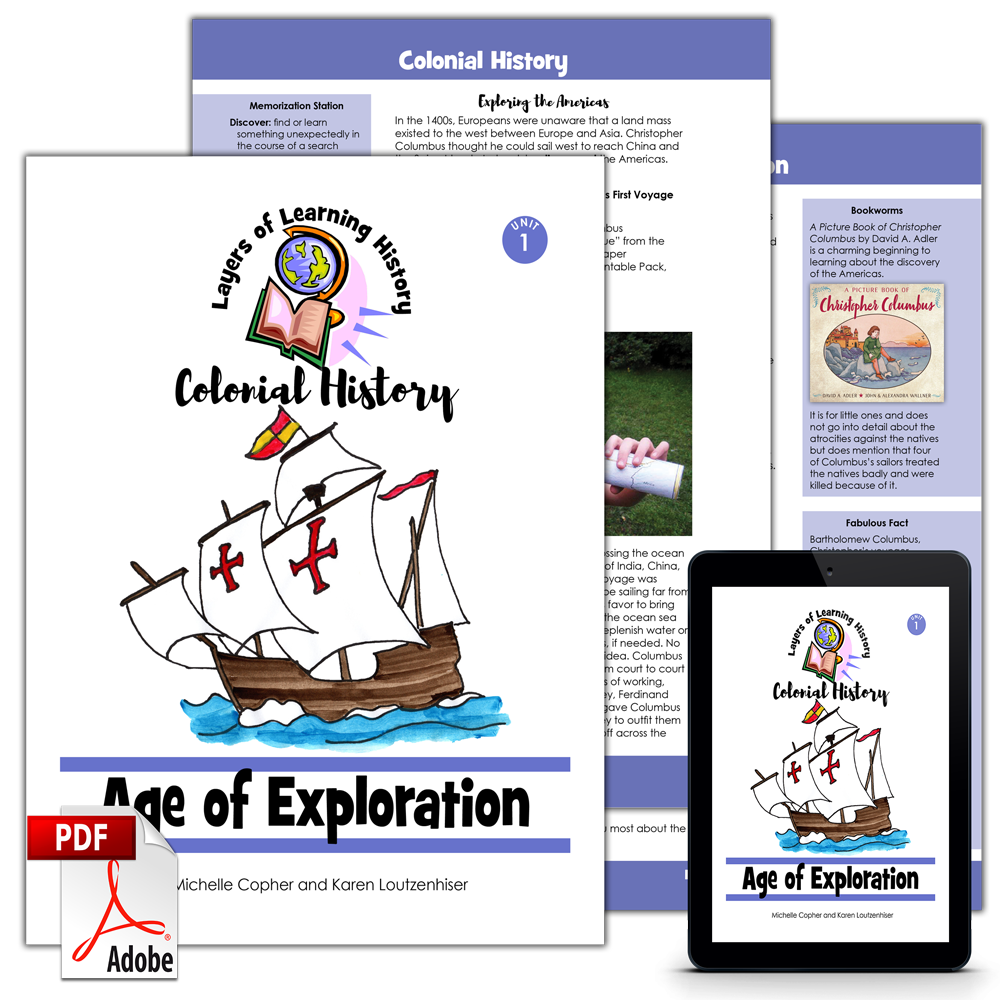
The Age of Exploration timeline is a history exploration from Colonial World History: Age of Exploration. Layers of Learning has hands-on activities and printables in every unit of this family-friendly curriculum. Learn more about Layers of Learning.
The Age of Exploration was probably the most pivotal era in the world ever. Europe discovered, colonized, traded with, and conquered nearly the whole world. Goods, money, food, animals, plants, and people moved all over the globe and helped create the modern world we know now.
Step 1: Library Research
Before you begin exploring, read a book or two about the Age of Exploration. Here are some suggestions, but if you can’t find these, look for books at your library about Age of Exploration, explorers, Columbus, Magellan, Vasco de Gama, and other explorers. The colored smilies above each book tell you what age level they’re recommended for.
As Amazon affiliates, the recommended books and products below kick back a tiny percentage of your purchase to us. It doesn’t affect your cost and it helps us run our website. We thank you!

Land Ho! Fifty Glorious Years in the Age of Exploration
by Nancy Winslow Parker

Step 2: Age of Exploration Timeline Activity
You will need colored pencils, glue, scissors, and the printable Age of Exploration timeline.
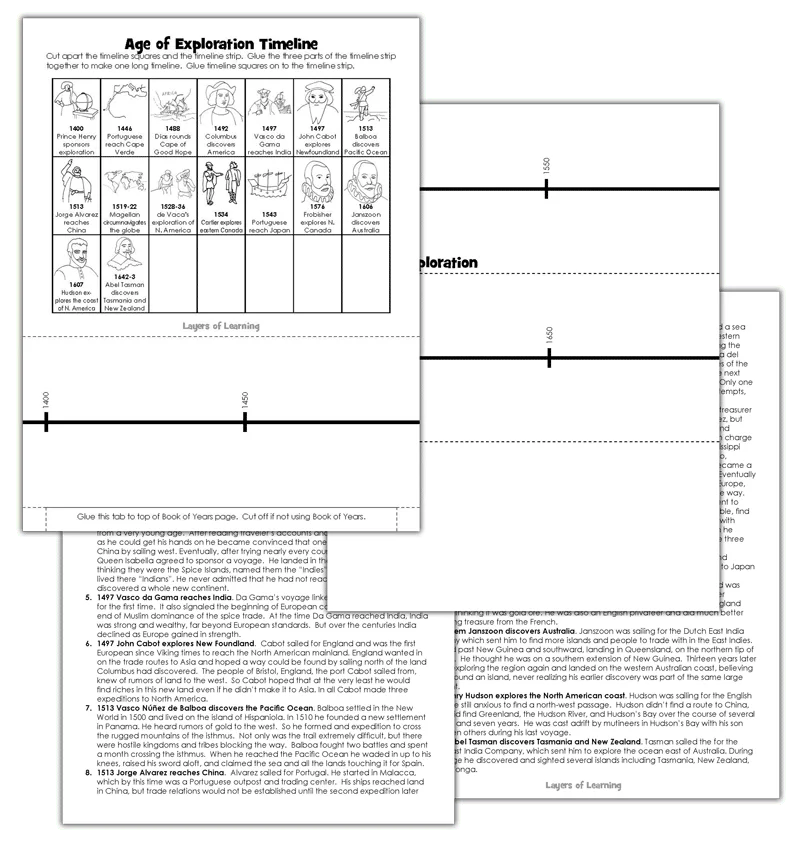
Color the pictures on the timeline squares. Cut out the timeline and glue it end to end so the dates are in order. Cut out the timeline squares. Arrange the timeline squares on the timeline, then glue the timeline squares in place.
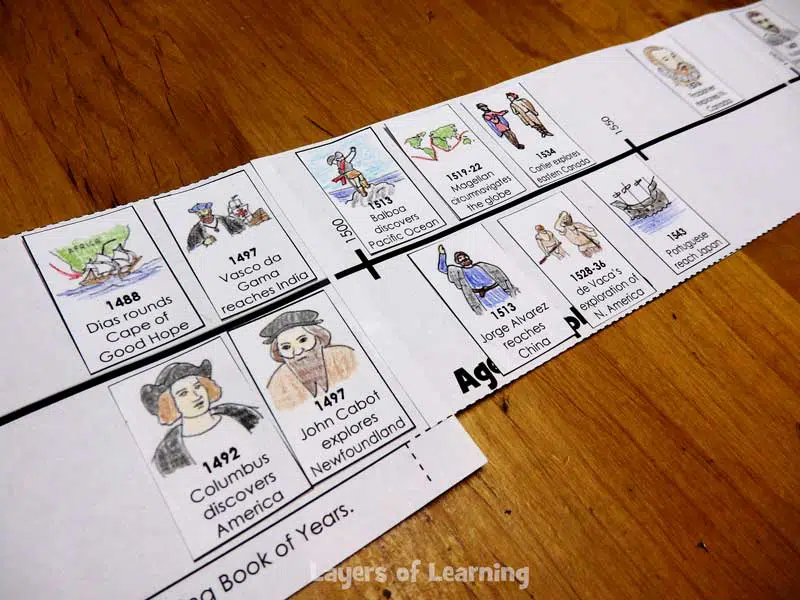
If you like you can glue this timeline into the Book of Years as a “pop-out” timeline. Just glue the tab onto the upper edge of the appropriate page in the Book of Years.
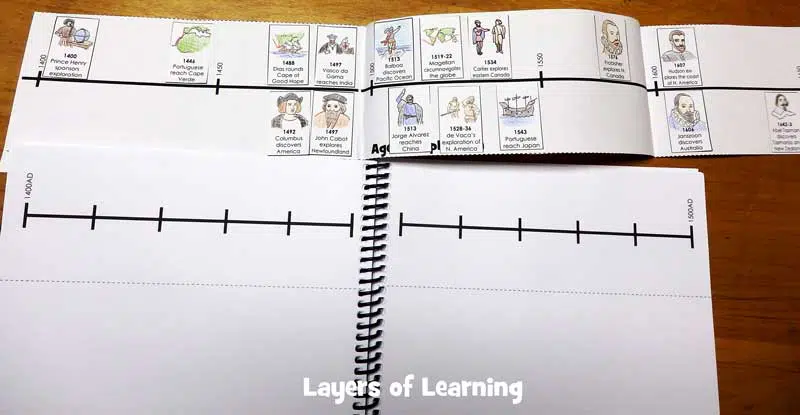
You can also glue this timeline into a notebook.
The printable also has short explanations of each of the events on the timeline to read aloud and discuss.
Step 3: Show What You Know
Choose one of the explorers on the timeline to research more about. Write a biography of the explorer you chose, focusing especially on his explorations. Share your biography with an audience, like your family.
Additional Layers
Additional Layers are extra activities you can do or tangents you can take off on. You will find them in the sidebars of each Layers of Learning unit. They are optional, so just choose what interests you.
Writer’s Notebook
Create an advertisement asking for crew to support your daring expedition into the unknown. How would you convince people to risk their lives?
Make it into a poster or pamphlet.
Additional Layer
The reason Europeans wanted to explore was to get rich. They believed in an economic philosophy called mercantilism.

Learn more about mercantilism and how that philosophy shaped the colonization policies of the Europeans over the next several hundred years.
Additional Layer
In 1580 the Russians began to explore and expand eastward. In 1639 they had reached the Pacific Ocean, building forts along the way.

Learn more about Russian explorations.
Get a Free Unit
Choose between the first unit in each Layers of Learning subject to try for free when you sign up for the newsletter.
We never spam and you can cancel your subscription at any time.


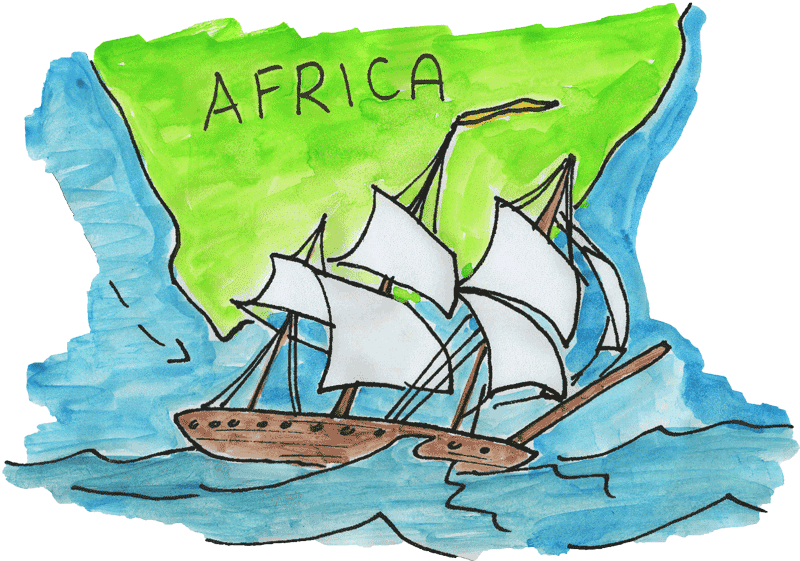





I love this year-long activity. I am having my students create “baseball cards” for explorers and this would be a great place to place them so the wall will be filled with student-made work ALL YEAR!!
Thanks for this idea.